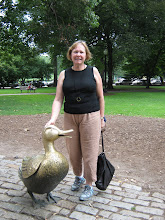International Day of Play, observed on 11th June, marks a significant milestone in efforts to preserve, promote, and prioritise playing so that all people, especially children, can reap the rewards and thrive to their full potential.
Children learn best through play. Play creates powerful learning opportunities across all areas of development – intellectual, social, emotional and physical. Through play, children learn to forge connections with others, build a wide range of leadership skills, develop resilience, navigate relationships and social challenges as well as conquer their fears. When children play, they feel safe. Children play to make sense of the world around them. More generally, play provides a platform for children to express and develop imagination and creativity, which are key skills critical for the technology-driven and innovative world we live in.
The theme for this year’s International Day of Play is “Choose Play – Every Day”. The theme is a reminder for all of us – governments, businesses, schools and families – to take decisions that embrace and prioritise play for children.
Preschools prioritise play, but schools do not in the same way that they used to. School days are too curriculum- heavy and too technology-focussed because of the amount of time spent in front of a smartboard or on a device. Gone are the time where every Friday afternoon we did creative play which could have meant putting on dress clothes and doing an impromptu play, building with and playing in cardboard boxes, sawing and hammering nails into wood, sewing, painting on the school fence with a paintbrush and a bucket of water ... the list never seem to be exhausted.
Many of the children I teach have parents who are not quite sure what to do with their children if there is not an organised activity they can book them into or they haven't got access to a device. I remember that my siblings and I never told our mother we were bored or we would find ourselves with a long list of chores that needed doing. Instead we made cubbies, we played in the neighbouring paddock with other children who lived in the street, we built whole cities out of sand, made dams, went yabbieing, rode our bikes, read and just stayed out of the way!
It was a wonderful childhood, and I do feel sad when I need to create the play at lunchtime in the library because the students who have come to the library don't want to read necessarily, but want to do 'something'!
Somewhere in the back of my mind I have this quote, that I cannot find online, from Dorothy Butler, author of Babies Need Books, about books being a natural part of play for young children. Put books out with toys and at some point the books will be chosen and 'played with' too. So just as children need time to play and have fun, they also need time to with books and stories.
There are books which depict children having fun playing which do not include 'play' in the title too.
See these great examples of creative play:
• Ladybug Girl and Bumblebee Boy by David Soman and Jacky Davis
• King Jack and the Dragon by Peter Bently and Helen Oxenbury
• You'll Wake the Baby by Catherine Jinks and Andrew McLean
• All For One by Jill Murphy
• On Sudden Hill by Linda Sarah and Benji Davis
• This is a Window by Lauren Paige Conrad
Now 'play' has other related meanings...you can play a game, play sport, play music, ...
Dr Peter Gray says that it doesn't matter which version of play we mean, as long as these characteristics apply
- Play Is Self-Chosen and Self-Directed.
- Play is intrinsically motivated—means are more valued than ends.
- Play is guided by mental rules, but the rules leave room for creativity.
- Play is imaginative.
- Play is conducted in an alert, active, but relatively non-stressed frame of mind.


















No comments:
Post a Comment